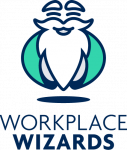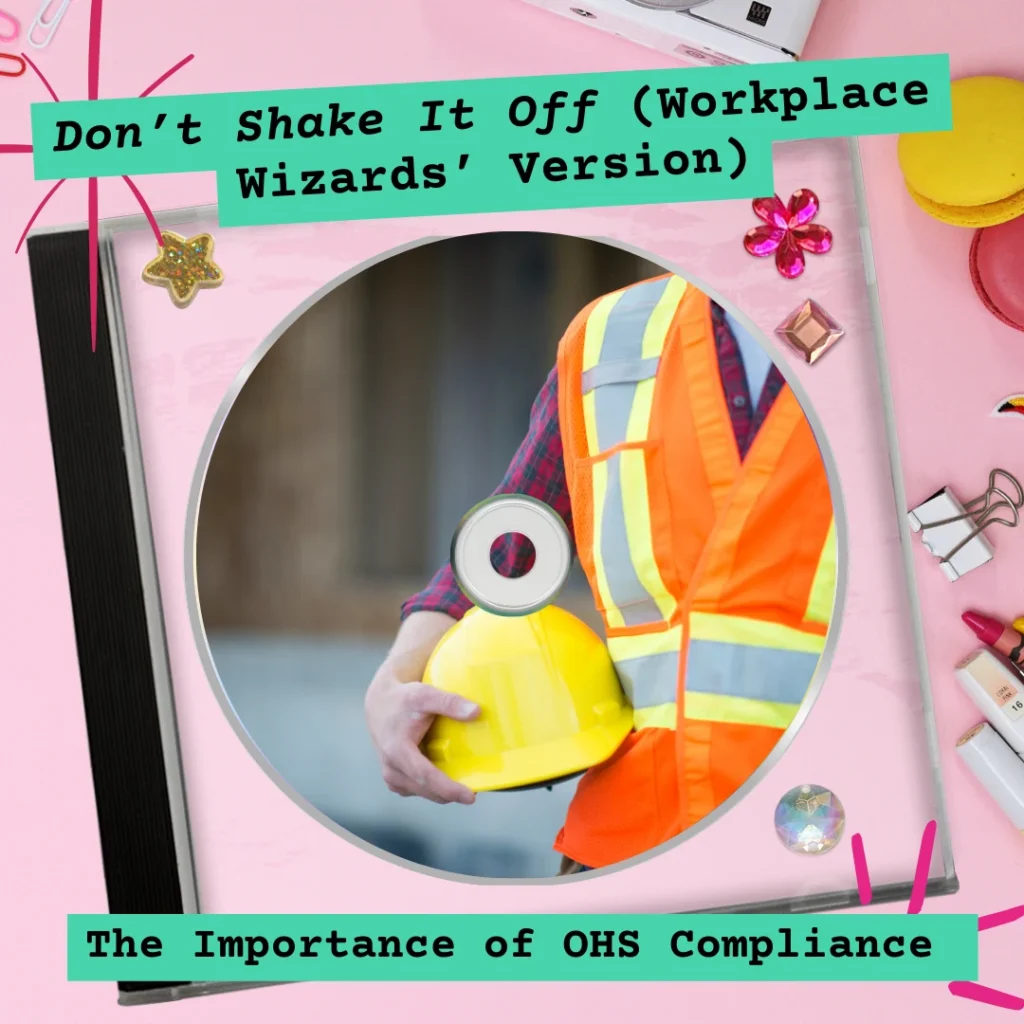“I stay up too late, got safety on my brain, that’s what managers say… mmm-mmm, but I keep proving, can’t stop, won’t stop grooving, it’s like I got this caution in my mind saying, ‘don’t just shake it off.”
Occupational Health and Safety (OHS) compliance is more than a checkbox activity that can be shaken off; it’s about building a sustainable culture that keeps everyone safe and healthy. By integrating solid safety practices into your workplace, you’re not just protecting your team—you’re also boosting productivity and steering clear of legal and financial headaches.
In this blog we’ll explore some common myths around OHS and practical steps to improve your workplace safety policies (beyond the bare bones of compliance!), all while taking some creative liberties with the lyrics to Taylor Swift’s Shake It Off – specifically to remind you to NOT shake off OHS!
Busting Common OHS Myths
“We keep on cruising, can’t stop, won’t stop choosing to debunk these myths, yeah!”
Alright, first let’s bust some common myths that might be tripping up your workplace safety efforts.
Myth #1: OHS is Mostly Common Sense
While it’s tempting to think that common sense will keep everyone safe, real-world safety is complex and often counterintuitive. Effective OHS involves understanding specific laws, identifying less obvious hazards, and implementing protocols that might not be immediately apparent. It’s about building a structured approach to safety that goes beyond everyday intuition. Leaving it to ‘common sense’ alone, often creates numerous blind spots that you’re not even aware exist. By being proactive with OHS, and going beyond common sense, you can ensure you’re not only prepared to handle any potential blind spots but you’re also equipped for any other unpredictable safety curveballs that the future might throw at you.
Myth #2: OHS is All on You, the Employer
Yes, you’ve got big responsibilities, but safety is a team sport. Everyone, from the CEO to the newest intern, needs to play their part in keeping the workplace safe.
It’s particularly crucial to deconstruct this idea of safety being something that only management deals with. Your employees should be empowered to identify risks and voice concerns. This collaborative approach not only enhances safety but also promotes a more engaged and responsible workforce.
Myth #3: OHS is Too Expensive
Think of implementing an effective OHS system as an investment, not a cost. The payoffs include fewer accidents and a lower risk of expensive legal issues. Plus, there are plenty of cost-effective safety solutions that can be tailored for smaller businesses.
Investing in OHS not only prevents costly accidents but also improves employee morale and productivity, which can lead to greater rewards the long run.
Myth #4: Safety Rules Just Slow Things Down
Let’s keep it real; we’ve all had this thought pop up at least once. ‘We’ve done this before/there’s been no issues/all these rules just slow things down’. This however is the equivalent of running with your shoelaces untied because you don’t have ‘time’ to slow down and tie them up – sure it saves time in the moment, but it’ll cost you dearly when you trip over yourself down the line.
OHS is always a big picture game and most of these myths arise from a fundamental misunderstanding of what safety protocols entail. Far from being a hindrance, well-designed safety measures streamline operations and reduce time lost to accidents and injury-related absences. This leads to a more efficient, more productive, and ultimately more profitable operation.
Good safety practices result in smoother, faster workplace—not the other way around. As the saying goes, a stitch in time saves nine!
Myth #5: It’s All About Avoiding Fines
While dodging fines is great, effective OHS is really about valuing your people and creating a workplace where everyone can thrive without worry. Centring your OHS approach with ‘avoid penalties’ as your main mantra can skew your perspective and see you miss out on the more holistic elements of OHS – ultimately leading to a more reactive than proactive execution of related policies and processes.
The core of OHS is about valuing human life and well-being. A safe workplace is a more positive, engaging, and productive environment. This commitment to well-being can enhance your reputation with clients and within your industry.
Myth #6: Once Set, Forget the Safety Plan
Safety isn’t a ‘set it and forget it’ deal. Safety by nature demands vigilance and adaptability, and workplaces are dynamic. They change every day, and as they change, new risks also pop up. As such, it’s important to keep your policies dynamic too – most of all your policies to do with workplace safety. Regular updates are key.
As new technologies, processes, or materials are introduced, or as changes in staffing occur, previously unforeseen risks can, and do, always emerge. Regularly reviewing and updating safety plans ensures they remain effective and relevant.
Myth #7: Only Certain Industries Need OHS
One of the most prevalent myths is that safety is only a real concern in certain industries, namely those that involve more physical work such as trades or construction.
Hazards aren’t just about heavy machinery though; they’re about everyday workplace safety.
Every workplace has its risks, whether it’s the obvious dangers of a construction site or the more subtle ergonomic risks in an office environment. If anything, these subtle risks pose more of a threat because they’re subtle and often fly under the radar. Understanding that safety is a universal need is crucial to protecting all employees, regardless of the industry. This broadens the scope of OHS to encompass a wide array of environments and challenges.
Seven Key Steps to Enhance Your OHS Compliance
“Got hazards on my list, ticking them off, and I’m writing it twice, planning and tracking, gotta get this right.”
Step One – Appoint a Safety Leader: Select a dedicated leader for your safety initiatives, ideally someone with a deep understanding of OHS. While internal candidates may be familiar with daily operations, engaging an external expert is highly recommended. External consultants bring specialised knowledge, fresh perspectives, and a broader understanding of industry standards and compliance requirements. Their expertise can be invaluable in identifying hidden risks and implementing cutting-edge safety solutions that might be beyond the scope of your current team. This approach not only enhances your safety protocols but also demonstrates a serious commitment to workplace health and safety to all stakeholders involved with your organisation.
Step 2 – Engage Your Team: It’s really important to foster a culture where employees feel encouraged and empowered to take an active role in safety management. You can set up mechanisms such as safety committees or suggestion boxes that empower workers to voice concerns and propose solutions. Communication is a two-way street, so it doesn’t begin and end at you communicating updates to your staff; they also need an effective way in which they can communicate their experiences, suggestions and ideas to you. Regular interactive sessions, such as workshops and safety briefings, can also help staff understand their role in maintaining safety and make them feel valued for their input. This involvement not only improves the relevance and effectiveness of safety measures but also boosts overall engagement and compliance.
Step Three – Training Is Key: Consider implementing a comprehensive and engaging training program that covers all aspects of safety relevant to your workplace. Regular training updates are essential to keep pace with new regulations. It’s easy to slip into the ‘tickbox’ mentality here and think your job is done if you give your staff a module to watch or papers to read, but training involves not only providing the information to your staff but ensuring they actually understand and are engaging with it. Switch up from a strictly ‘obligations and compliance’ mindset to think about the bigger picture of safety here and use that to lead you into designing training that’ll be effective and true to its purpose. This is something that external specialists can also really give you a hand with – they’ve got the expertise and an arsenal of tried and tested methods of communication to help you find what works best for your workplace.
Beyond formal training, it’s also important to ensure there’s continuous supervision to reinforce safety practices and address non-compliance immediately. This continuous loop of education and supervision helps maintain a high standard of workplace safety and ensures that all employees feel confident in their roles.
Step Four – Assess and Prepare: You should be regularly performing thorough risk assessments to identify potential hazards in the workplace. As mentioned before, workplaces are ever changing, as are risks. Not only do new risks crop up every day, but existing risks also change and evolve alongside the rests of the workplace. So, assessment and preparation needs to be a continuous process, not a one and done affair.
You can also use your assessments to develop or update emergency response plans that are clear and accessible to all employees. Conducting regular drills for example can help ensure that everyone knows their role during an emergency, reducing panic and enhancing the effectiveness of your response to actual incidents.
Step Five – Keep It Dynamic: We’ve said it multiple times here already but you can never place too much emphasis on this very vital point. Safety management should be an ongoing process that adapts to new challenges and feedback from staff. Implement a regular review cycle for all safety procedures and update them as necessary. This could include seeking feedback from employees, reviewing incident reports, and staying informed about advancements in safety equipment and techniques. Continuous improvement not only helps in addressing potential safety issues before they become problematic but also demonstrates a commitment to creating a safe working environment.
Step Six – Acknowledge ‘Wins’: Recognise and reward employees and teams for excellent safety performance. Safety can be a bit of a doom and gloom concept sometimes, so it’s important to celebrate the positives of when there is good safety performances or things have worked, gone well and the workplace has been incident free. Recognition could be through formal recognition announcements, or even small rewards. Celebrating these achievements can significantly boost morale and encourage a proactive approach to safety across the organization. It also helps to reinforce the idea that everyone is responsible for and can contribute to workplace safety.
Step Seven – Embrace Technology: Technology is your friend! Probably not wise to leave it all up to tech to do the entirety of upkeeping safety in the workplace for you, but you can utilize the latest technological tools to enhance your OHS management. This can include incident reporting software, risk assessment tools, and online training platforms.
Technology can provide real-time data, streamline communication, and simplify the management of compliance records. Adopting innovative solutions not only improves efficiency but can also lead to better data analysis, helping to predict and prevent potential incidents before they occur.
Taking these steps seriously will help you create a workplace that’s not just safer but also happier and more productive. Remember, effective OHS compliance isn’t just about following rules—it’s about creating a culture where safety shines.
You might also be interested in our blogs on:
Changes to Victoria’s Work Cover Scheme
To ensure you’re meeting legislative requirements and have covered all bases, professional assistance can be of immense help. It takes the pressure off your shoulders with an expert walking side by side with you to help keep your workplace safe and compliant. Workplace Wizards are experts in delivering training and advice to ensure employers are using best practice initiatives to identify, manage and eliminate OHS risks in the workplace. Just call Workplace Wizards on 03 9087 6949 (or email at support@workplacewizards.com.au)
Workplace Wizards is proud to have worked with a number of clients across the aged care industry, acting as strategic advisers and providing customised support so that organisations can function effectively and efficiently while meeting current regulatory standards.





Comments are closed.